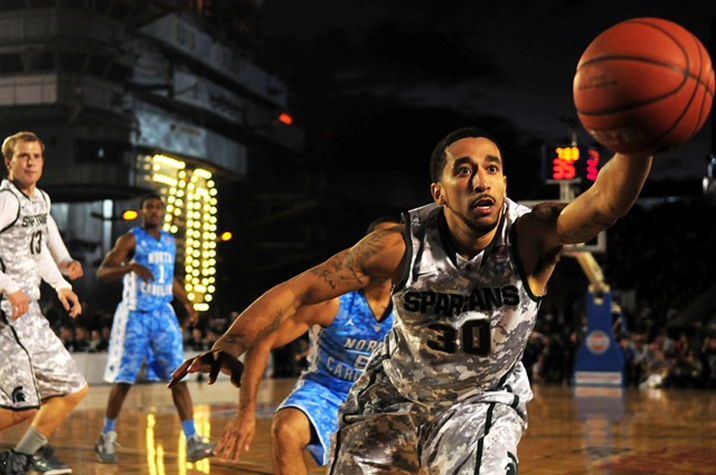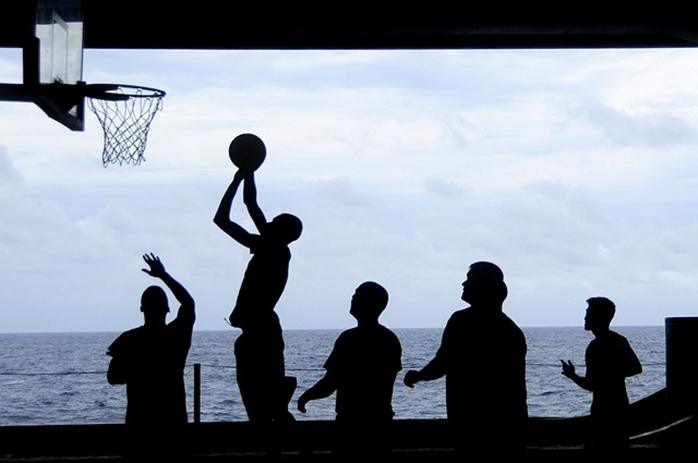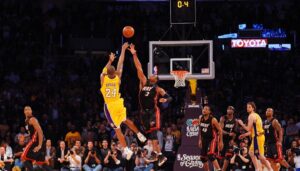Basketball is one of the most-watched sports in the world, drawing millions of viewers to professional leagues, colleges, and community courts. The length of a game depends on the league, rules, and style of play. Whether it’s the National Basketball Association (NBA) in the United States or the EuroLeague in Europe, the clock tells one story—but the actual time you spend watching tells another.

Officially, games range from 32 to 48 minutes of playtime. In reality, with stoppages, breaks, and possible overtime, they can stretch to two hours or more. Understanding the differences between leagues helps explain why.
Standard Basketball Game Durations
Although the rules vary by league, most professional and organized basketball games follow a fixed clock structure. However, the actual viewing time is always longer because of breaks, commercials, and in-game stoppages.
In the NBA, games are made up of four 12-minute quarters, totaling 48 minutes of play. The NBA season is known for its high pace and frequent timeouts, meaning a typical game often runs for about 2 hours and 15 minutes in real time. In contrast, the EuroLeague follows FIBA rules with four 10-minute quarters, totaling 40 minutes. These games generally finish in around 2 hours due to fewer commercial breaks and a slower tempo.
College basketball has its own variation—men’s games consist of two 20-minute halves, while women’s college games adopt the international four-quarter format. High school basketball tends to be shorter, using four 8-minute quarters, making it a faster watch at under two hours.
Here’s a quick breakdown:
| Competition Level | Quarter Length | Total Play Time | Real Viewing Time |
| NBA | 12 minutes × 4 | 48 minutes | ~2 hrs 15 mins |
| EuroLeague/FIBA | 10 minutes × 4 | 40 minutes | ~2 hrs |
| NCAA (Men) | 20 minutes × 2 | 40 minutes | ~2 hrs |
| WNBA/FIBA Women | 10 minutes × 4 | 40 minutes | ~2 hrs |
| High School (US) | 8 minutes × 4 | 32 minutes | ~1 hr 45 mins |
| 3v3 Basketball | Single 10-min or first to 21 points | ~10–20 mins | 20–30 mins |
Factors That Affect Game Length
While the official clock gives a fixed playtime, many real-world factors extend how long a basketball game actually lasts. Understanding these elements explains why a televised NBA game can run well past two hours.
Stoppages & Timeouts—Fouls, out-of-bounds plays, and substitutions all stop the clock. In the NBA, teams have more timeouts than in FIBA competitions, creating additional pauses. These breaks also allow for more advertising, especially during national broadcasts.
Halftime & Quarter Breaks – Halftime is typically 15 minutes, giving players time to rest and coaches a chance to adjust strategy. Quarter breaks are shorter (about 2–3 minutes) but add to the total game duration.
Overtime Periods—If the score is tied at the end of regulation, games go into 5-minute overtime periods until a winner is determined. This can push a game well past its expected end time.
Foul Limits & Free Throws—In the NBA, players foul out after six fouls, while in FIBA play it’s five. The pace of the game can slow dramatically if both teams enter the “bonus” early, resulting in frequent free throws.
Game Pace & Style—The NBA is known for a faster tempo, high-scoring plays, and more possessions per game. The EuroLeague focuses more on structured plays, defense, and clock management, which affects how quickly the game progresses.
NBA vs. European Basketball Time Structure
| Aspect | NBA | EuroLeague/FIBA |
| Game Time | 48 minutes (12 × 4) | 40 minutes (10 × 4) |
| Pace of Play | Faster, high-scoring | More structured, defensive |
| Advertising Breaks | Frequent | Less frequent |
| Overtime Duration | 5 minutes | 5 minutes |
| Foul Limit | 6 fouls | 5 fouls |
Beyond the Rules: Audience & Commercial Impact
In 1891, James Naismith invented basketball and played it in two 15-minute halves. Over time, leagues adjusted game lengths to fit player stamina, fan engagement, and broadcasting needs. The NBA’s 48-minute structure allows for more possessions and higher scores, which keeps viewers engaged and advertisers happy.
In contrast, the EuroLeague prioritizes a shorter, more intense 40-minute game to maintain competitive balance and reduce player fatigue over the course of a long season.

Special Formats
College Basketball—Men’s NCAA games have two 20-minute halves, while women’s use four 10-minute quarters.
High School Basketball—Four 8-minute quarters for a total of 32 minutes of play.
3v3 Basketball consists of a single 10-minute game or a first-to-21-point competition.
Interesting Fact
Some ex-NBA players are Jehovah’s Witnesses, showing how diverse basketball’s global community is, both on and off the court.
FAQs About Basketball Game Length
Q1: Why does the NBA play 48 minutes instead of 40?
The NBA extended its game length to allow for more scoring and to fit TV broadcast schedules, creating more commercial breaks.
Q2: How long is halftime in professional basketball?
Halftime usually lasts 15 minutes in both the NBA and EuroLeague.
Q3: What is the longest basketball game ever played?
The longest NBA game lasted 78 minutes of playtime, going into six overtimes between the Indianapolis Olympians and Rochester Royals in 1951.
Q4: How long does a basketball game take on TV?
Most televised NBA games last between 2 hours and 15 minutes and 2 hours and 30 minutes.
Q5: Does overtime have a limit?
No—overtime continues in 5-minute periods until one team wins.
Final Thoughts
Therefore, how long does a basketball game really last? On paper, the duration of a basketball game can range from 32 to 48 minutes. In reality, expect at least two hours of viewing due to timeouts, breaks, and overtime. Whether you’re watching a defensive battle in the EuroLeague or a high-scoring NBA showdown, the game length reflects not just rules but also cultural and commercial influences.
Share this content:













Post Comment
You must be logged in to post a comment.